Anne Upton is a racing legend and a true blue slice of South African turf history. A formidable horsewoman, she was only the second lady trainer in South Africa, taking out her licence at the tender age of 21. She started training in Hilton, mainly for her parents and husband Lou and forged a reputation for being good with difficult horses, which attracted the admiration and support of the likes of Fred Rickaby, Syd Laird and George Azzie. Despite never having more than 20 horses, she achieved a string of successes, including two Holiday Inns and a gazebo at Scottsville built in her honour, but she is most strongly associated with the mighty Furious. We revisit the story of one of our most famous champions and chat to Anne about her life and racing career.
Natal Born and Bred
Anne Upton was born in Pietermaritzburg on 13 December 1935. From farming stock and good ‘horsey’ people, Anne grew up in the Hilton Road area of the Natal Midlands and was educated at Wyckeham Collegiate. Her father, Jimmy Hampson, had racehorses in training with George Salter and her mother taught her to ride at the tender age of four. Anne was the younger of their two children.
Anne is approaching her 80th birthday and while age may have added a slight tremor to her voice, it is still lively and strong and she reels off horses, dates and events as though they happened yesterday. “I lived with horses all my life. My mother was a wonderful horsewoman and my father and brother played polo. I played for the Underberg ladies 1951 winning side. My father had some horses in training with one of the very old trainers in ‘Maritzburg. I would go and see these horses at the stables. I’d also go along to the races. As a child I wasn’t allowed in of course, but I used to watch from the gate. I enjoyed polo ponies, jumpers, show hacks, but I really wanted to train race horses. I always had a liking for racing – it’s always been in my blood.”
Starting out
“I was looking through my scrapbook the other day and found a receipt for £60. I paid £60 for four ex-racehorses from Harry Barnett in 1953 and started training those for gymkhanas. “We did quite well,” she says modestly. Although only the second woman to hold a trainers licence in South Africa, it’s not something she makes a particular fuss about. “I always wanted to train and never felt intimidated by the fact that it was a male dominated profession. I didn’t go into it thinking I was somebody special and I’ll show them – you don’t in racing! I got a license to train in 1957. My first trainers badge was No. 13 – good for me as I was born on the 13th December.”
“I was very lucky. Frank Lambert (Bill Lambert’s father) was the Chairman of Pietermaritzburg – the City Sporting Club as it was known in those days. He knew the Birch Bros and introduced us to Ted and Rosa Birch, who invited us to visit them. Lou and I got married in 1958 and while we were on honeymoon down in the Cape, we stayed at the Birch Bros. They gave me three horses – all older horses that had raced, but still had races in them. One, a Ranjit gelding named Infringe, became my first winner, so the Birch Bros put me into training really.” Of the other two – one was an entire called Dowry. They used him for stud and he delivered Anne one of her greatest racing memories – “My mother leading in her homebred colt Dowrys Son after winning the Kruger Day Handicap in 1962. He was my first feature winner.”
Anne initially trained from her parents’ Hilton Road property, later moving to her own farm in Howick in 1981. Anne seemed to have a gift with difficult horses and trainers soon started sending her problem horses to fix. “In the mid-sixties I was offered an unmanageable Drum Beat gelding called Tympanist, owned by the late Walter Grinrod. He was a non-sweater and had a phobia of the starting tapes. Basically that horse made my name in racing because he was on the point of being warned off the racecourse for life when he was sent to me. We brought him up to Hilton Road, which was a bit colder than Clairwood and he eventually came right and started sweating normally. I made a replica of the barrier tapes and strung them in front of his loose box. At first he was terrified, but he gradually accepted them. He won nine races, ridden mostly by David Payne.”
For a horse with starting stall issues, she made a tape recording of the noise at the start which she played for him until he got used to it. Another horse that was afraid of the handlers, received a custom-made straw dummy which she put up in the starting stalls to simulate a handler.
International exposure
In 1971 Anne met Mill Ridge Stud’s Alice Bell, breeder of English Derby winner, Sir Ivor, on a visit to Scott Bros (Alice was visiting her fiancée Dr John Chandler, the resident stud vet at the time). “Alice invited me to Kentucky and showed me the great studs and some of the best horses in the world – Nijinsky, Bold Ruler, Sir Ivor and our South African champion, Hawaii. Alice had a horse named Commentary in training with Lucien Laurin, so I spent a day in his barn at Belmont Park. When Commentary came to stud in South Africa, I bred two top colts from him – Redwing and Bold Comment.”
“When beef baron Cyril Hurvitz brought Charlie Whittingham to South Africa, he selected two horses to take back with him – Bold Tropic from Buller Benton and Redwing from me. Redwing was due to leave South Africa when tragedy struck and he died of African Horse Sickness. Whittingham invited me to America anyway and it was the start of many visits to one of the most respected trainers and racing stables in the world.”
Solid Support
Fred Rickaby was a good friend and supporter. “I ran second to him quite often and he would always remark, ‘You here again, Kid?’ Rickaby didn’t have to see me be successful with Tympanist, he knew I had ability and often sent me horses. He was a big backstop in my racing history.”
“Sydney Laird – I don’t think Africa will ever have a better trainer – sent me 5 horses. He’d phone me and say ‘Annie, I put a horse on the train this morning, meet him at the station, he’s your type of horse.’ He’d be right. He sent me my first winner at Greyville – Veld Fire. The next person who sent me horses was Michael Azzie’s grandfather, George Azzie who sent me three that I did quite well with.”
“It was good for me to know I was doing my job properly. Trainers like those three men would never have sent horses to an idiot. They knew I was good with my horses, looked after them, fed them properly and delivered the goods for my patrons. They were only too happy to send me horses and I can never thank them enough – of course they’ve all gone now, but they were all friends of mine and I respected them as great trainers.”
The Furious story
Although Anne can count two Holiday Inns to her credit, it’s Furious that people associate her with most strongly. Fred Rickaby’s top pick of the 1976 National Sale, Cyril Hurvitz had to go to R17 000 for the son of Savonarola. Ten days after the sale he developed a temperature that ran for weeks and later suffered an attack of biliary. Then he developed hock and knee trouble and because he needed a long rest, he was cut. For months afterwards he struggled with an extremely low blood count.
“Fred phoned me to say he’d run the horse once and he wasn’t very impressed with him. He said come and have a look at this horse. Mr Hurvitz wants you to have a look at a couple of horses here, if you like him, take him. He joined my yard at the end of 1977.” Furious’ first start in Anne’s care was over 1600m at Scottsville in January 1978, which he won comfortably. He won again at Greyville in February. “I phoned Hurvitz to tell him – he was in Botswana counting his cattle – and he immediately said he wanted Furious to win the Holiday Inns at the end of the year. I said well that’s a bit of a step – I have to qualify the horse for it. In those days you had to really qualify them and we had to win a big feature race to get him in. Furious won the Black & White Gold Bowl in October and the UTA, so he had good qualifications.”
On 9 December 1978, less than 11 months after his first win, Furious won the Holidays Inns in style. Asked what her emotions were at the time she answers, “You know, it’s great to win a big race, I can tell you that now, but with Furious I was very relieved because the scary thing about Furious was his owner!” Hurvitz was the biggest gambler in SA at the time and had started backing Furious in March. He won a fortune.
“When the horse won I thought ‘that’s magic, I’ve done my duty and that’s fine.’ Immediately afterwards Hurvitz said he wanted me to go to Cape Town and have a crack at the Met and I said ‘I’m not going to Cape Town, nor is Furious – he’s having a holiday.’ Those were my very words to him, so he knew who he was dealing with,” she says firmly. Furious ran several more times, winning the Gr1 Champion Stakes and Gold Cup at Greyville. In retirement, Furious lived out his days as the lead horse at Turffontein and he is honoured by having the Furious Room named after him.
North Island
Anne won the Holiday Inns for a second time in 1983 with a horse called North Island. “North Island was owned by a syndicate including a gentleman named Peter White, and he was sent to me by Alistair Gordon, who felt he’d do better with me in the country. It was a good decision on Alistair’s part – it suited the horse and he did very well. He won the Transvaal Stayers with Michael Roberts in the saddle and that qualified him for the Holiday Inns, which he duly won. I wanted to keep him, but after the Holiday Inns, the syndicate sold the horse and he left my yard.”
Retirement
“I’d moved my training operation to Ashburton and in about 2000, Gold Circle decided that trainers should buy their barns. I was 64 at the time and I had bought a farm and I thought well I can’t take out a bond at 64, build up a farm and train horses, so I decided to retire. The last race I won was the King’s Cup at Greyville on 24 March 2001, which I won for Peter White with Abernant Star. I had trained for Peter since 1983 with North Island and he had a gazebo built in the parade ring at Scottsville in my honour, where some of my feature race winners appear on a brass plaque.”
After retiring from training, Anne focussed on her farm and her cattle. She sold the farm 4 or 5 years ago and moved to the Sakabula Estate just outside Howick with Lou. “I’ve got five acres, which is big enough for me. I’ve got my cats and dogs and there are reed buck and duiker, so I’ve got animals all around me.”
Lou sadly passed away in July this year at the age of 92. Anne still follows racing and her friend Doug Campbell in particular. “I’ve known Doug Campbell before he left Michaelhouse – he used to ride out with my racehorses, that’s how long I’ve known him! I still follow racing a lot. Anything I notice I can always mention to different trainers, but I don’t actually comment a lot, they must get on with the job.”
Have Your Say - *Please Use Your Name & Surname*
Comments Policy
The Sporting Post encourages readers to comment in the
spirit of enlightening the topic being discussed, to add opinions or correct
errors. All posts are accepted on the condition that the Sporting Post can at
any time alter, correct or remove comments, either partially or entirely.
All posters are required to post under their actual name and surname - no anonymous posts or use of pseudonyms will be accepted. You can adjust your display name on your account page or to send corrections privately to the Editor. The Sporting Post will not publish comments submitted anonymously or under pseudonyms.
Please note that the views that are published are not necessarily those of the Sporting Post.
4 comments on “Anne Upton”
Leave a Reply
‹ Previous
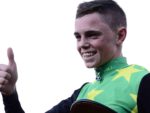




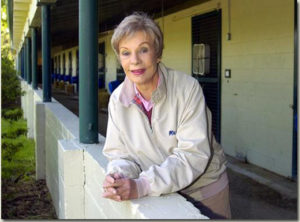


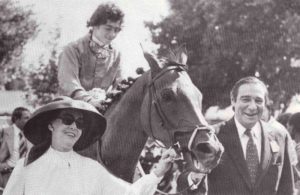
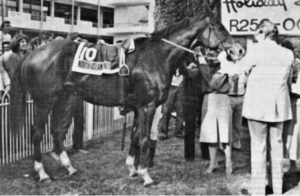


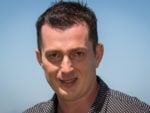
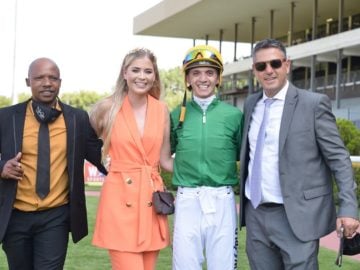
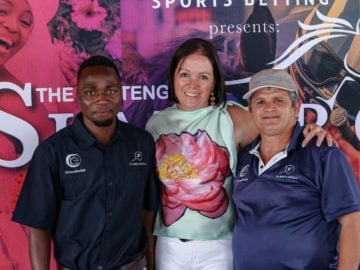
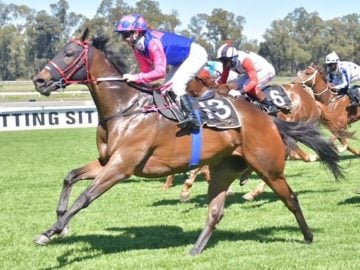
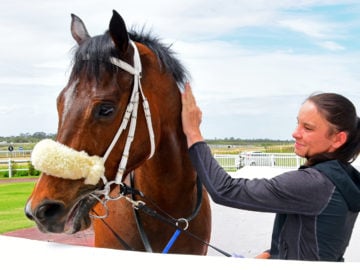
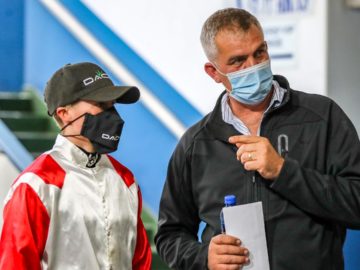






An amazing lady and an incredible font of information on racing.
Please can someone put me in touch with Anne…her husband Lou and my Dad are brothers and we have sadly lost touch…thanks Jenni
Hi Jenni
Plse check your email.
Regards
A super lady. A great friend of my dad. Very kind and knowledgeable. A huge loss.